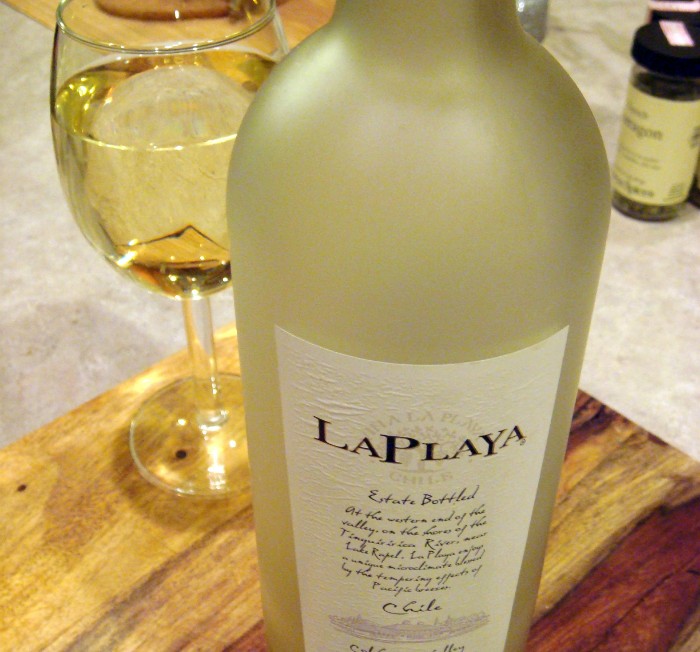One of the successes of this century is the rise of Sauvignon Blanc. I suspect much of the popularity of the wine is due to the minority camp of dry wine drinkers getting a little desperate for something with a spine.
[related_content slugs=”a-spectrum-of-spanish-wines,a-tour-through-the-reds-of-france,chardonnay-all-is-not-lost,the-torrontes-of-spring” description=”More from James Romanow” position=”right”]
SB is an unrepentant, sharp-edged weapon of a wine. Traditionally from the Loire, where Sancerre is as austere as a French Countess, it has since migrated around the world. Ignoring my affection for La Contessa, I think the best examples of the wine are all found in the southern hemisphere: New Zealand, South Africa and Chile. Everybody knows about the Kiwi version but Chile appears to be somewhat forgotten these days.
Chilean wines first took the stage in the dotcom era because the buck was high and California unaffordable. These days the chatter is all about Argentina and Malbec; Chile soldiers on, a solid player but a little out of fashion. The Chileans have been improving their wines steadily and I think they are now offering some of the best values on the shelves, particularly in the wines above $15.
I picked up a case of Chilean Sauvignon Blanc and I am pleased to say they were all fine. There was a gentle strength to them that I find reassuring. I get the sense these wines will always be there regardless of the madness of the rest of the world. The only real issue between the various labels is the final pH, which seems to vary by about 0.05 plus or minus, and a few wine making niceties.
Let’s start with the wine I think is the most massaged, Lapostolle Casa. They’re a very good winemaker with the backing of the Marnier clan. I like their wines but they tend toward the sybaritic, and their SB has the slightest lilt of coconut, which usually indicates at least some of the wine was oaked.
They deny oaking, but they did ‘fess up to adding 11 per cent sémillon, which probably accounts for that shot of exoticism. This is a wine for people who like their love life and their wines complex.
Errazuriz is one of my favourite SB. I only sampled the Estate Reserva here, although I enjoy the entire lineup. This has a slightly herbaceous nose, very crisp attack, and clean acidic palate with a lingering, slightly stony finish. In short, it offers everything you want in an SB.
La Playa is an old favourite of mine, and a regular in our fridge. If you like a wine with great grapefruity flavours, this is for you. Exuberant and slightly over the top, this is a great sword of wine.
Missiones D Rengo is a middle of the road SB and compared to something like La Playa rather watery. For any number of people this will make it more rather than less drinkable. If you’re watching your pennies give it a try. There really are no bad Chilean sauvignon blanc on the shelves here.
Arboleda is one of those small wineries that services smaller markets like Saskatchewan. The winery is built along a reservoir of the Aconcagua River, and hosts a nature reserve.
I like wineries that respect nature, but aside from that this wine had a lovely minerality that easily makes it worth the extra four bucks. The nose reminded me of tomato plants but that may be my fevered imagination. The palate is crisp and fruity with an absolutely fabulous mineral finish.
Caliterra was the most aromatic of the all these wines. I really liked this wine – it was also the most acidic with a pH of 3.21 – but have to admit I loved the minerals in Arboleda more. I expect the Wine Spectator will rank this one higher, so take it from there.
Finally if you are a person who frets about ingesting wicked chemicals (I’m a devout believer in better living through chemistry), Cono Sur has a bicycle label SB here. The bicycle label is good organic wines at really good prices. Is it Sancerre, or even Caliterra? No. It’s a touch sweeter, and a bit more watery. But, as I noted earlier, there are no bad Chilean SB.
Arboleda Sauvignon Blanc, Chile, 2011. $18.99 *****
Errazuriz Estate Reserva Sauvignon Blanc, Chile, 2011. $13.95 ****
La Playa Sauvignon Blanc, Chile, 2011. $14.41 ****
Lapostolle Casa Sauvignon Blanc, Chile, 2011. $17.84 ****
Caliterra Tributo, Sauvignon Blanc, Chile, 2010. $18.95 ****
Cono Sur Sauvignon Blanc, Chile, 2011. $13.99 ****
Missiones D Rengo Reserva Sauvignon Blanc, Chile, 2010. $13.99 ****
—
James Romanow writes about Wine and all things Boozy for the Spectator Tribune. Follow him @drbooze.
